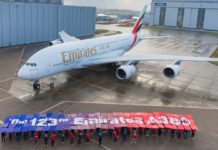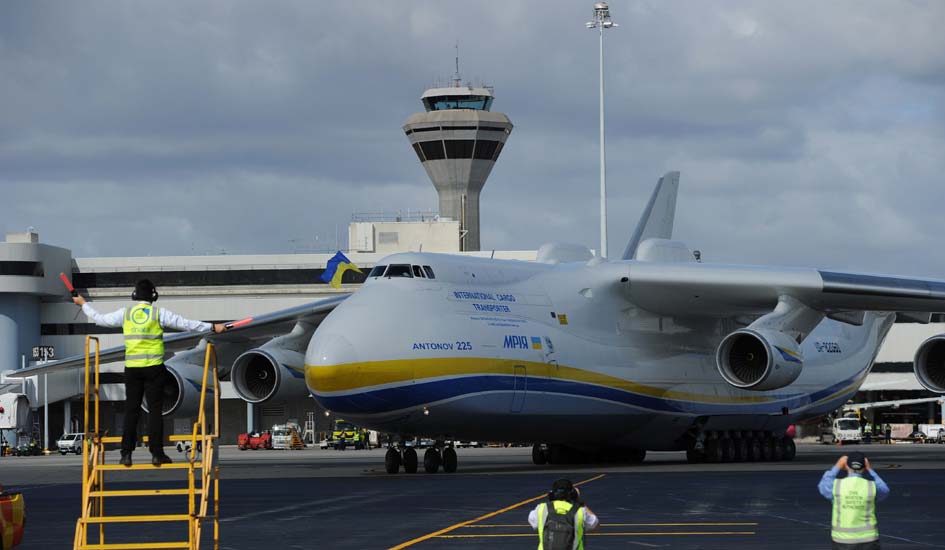Under stagnant industry conditions, chief executive Sam Hill optimistic Quest Aircraft Kodiak turboprop aircraft of 10 seats will have a bright future. Aircraft sales are expected to soar.
Quest has opened a new and larger factory in Sandpoint, Idaho with a production capacity doubled. The new hangar has also been acquired for a new research and development center.
The infrastructure investments are not just speculation for the 15-year-old company, which was acquired in 2015 by a Japanese investment group. After nearly doubling production over one year to 28 aircraft in 2013 and rising slowly to 32 aircraft two years later, Quest expects to deliver 39 Kodiak turboprops this year, 52 in 2017 and thereafter 60 aircraft a year. The rising deliveries come even as major competitors, such as the Cessna 208 Grand Caravan, have kept production mostly stable over the past four years.
Despite the looming ramp-up, Hill is careful not to speculate too far into the future. Asked whether a 60-aircraft annual delivery rate is sustainable, Hill declines to make any bold predictions. “I don’t have a crystal ball,” he says. “We’re anticipating that will be sustainable, but there are no guarantees.”
Although Hill joined the company only five years ago, he knows Quest has been in this position before. At the end of 2009, his predecessor Paul Schaller outlined plans for a similar ramp-up. The Kodiak had received airworthiness certification in 2007, on the eve of the global financial crisis.
The financial recession that unfolded over the next two years had not yet dampened Schaller’s plans. In 2010, he planned to more than double output to more than 50 aircraft a year.
Instead, by the end of 2010 Quest was barely surviving. Instead of 50 deliveries, a dwindling number of Quest employees handed over only 14 Kodiaks to customers. By December, all but a handful of a workforce that once exceeded 350 employees were laid off as production halted. A new round of financing revived Quest’s manufacturing operations by March, as the global economy began a slow and fitful recovery from the 2008 recession.
An interim chief executive, Vander Grind, carried the company through a nearly two-year recovery, before Hill took over in December 2012. As a single-product company with a turbulent financial background, most executives would have seen in Quest a tough management challenge, but Hill had seen something equally daunting. His aviation career began as a Challenger 300 pilot, but in July 1994 he joined Embraer to lead its commercial aviation business. The Brazilian national aircraft maker was then small, state-owned and on the brink of financial collapse, but what followed was one of the most remarkable turn-around stories in aviation history; Embraer is now the world’s third-largest aircraft manufacturer.
“There was nothing” in the backlog in 1994, Hill recalls. Then, Embraer launched the ERJ-135 regional jet in 1995. “In three years, we had 10 years of backlog.” In an interesting historical twist, Quest has followed a similar upward trajectory in the last few years.
Quest launched development of the Kodiak in 2001 with a unique business plan. Christian missionary groups in Africa and remote parts of Asia had relied on piston-driven aircraft, but avgas was increasingly hard to find and afford. Quest’s founders worked to solve that problem, designing an aircraft driven by a turboprop engine – the trusty Pratt & Whitney Canada PT6-34 – using more easily sourced jet fuel. The Kodiak also features a discontinuous outboard wing section, which creates an artificial wing fence of airflow that reduces the risk of stall. An aircraft with a reliable engine and a forgiving wing can be useful in missionary work.
Hill explains: “They know maybe in the last 20s whether they’re going to be landing on that strip or not. There could be a cow walking across the strip. You can make approaches at 60kt. You can be slower than that with full flaps – we don’t recommend it – and still have great controllability of the airplane. When you land you’re almost stopped.”
As it turns out, those same performance characteristics are also valued beyond the missionary community. Of the 170 Kodiaks delivered since 2008, about 27 or 28 are in service with missionary teams, Hill says. Another roughly 20 aircraft are operated by governments or high-net-worth individuals. The remainder have been acquired by commercial operators with a broad spectrum of applications, including sightseeing tours and cargo transport.
As Quest prepares for a production ramp-up, the Kodiak is also getting a mission make-over. The same aircraft designed for missionaries may have a future with militaries. Defence contractors have been down this route before – a Quest-Northrop Grumman partnership to develop a highly-sophisticated surveillance version of the Kodiak called the Air Claw failed to attract any orders and was dissolved – but the idea of pressing the Kodiak into military colours lives on. Instead of partnering with an established prime, Quest is instead developing its own version of the Kodiak suited for surveillance missions. That variant partly explains the new R&D centre in Sandpoint.
“We are developing the platform for [intelligence, surveillance and reconnaissance] and camera adaptations,” Hill says. “However, we’re not working with any particular system. We want our customers to pick their own systems. We will allow them to fit whatever system they want on the airplane. We’re developing a system that with adapters can use almost anything that’s out there today.”
Two capabilities will not be part of Quest’s package. The Kodiak is not designed with wing hard-points, so the aircraft will be not be adapted to carry weapons, Hill says. Second, Quest is not using any equipment subject to compliance with the International Traffic in Arms Regulations (ITAR) treaty.
“The platform works well for any application you want to put on it. It has eight-plus hours of loiter, and slow flight with great controllability – stay on station or push it up to 180kt and get to a site very fast,” Hill says. ISR and large camera modifications should be completed this year, using an adapted, external cargo pod already fitted on the Kodiak.
The next step for any company in the general aviation market is to expand. A single product may be enough to attract a loyal customer base, but most manufacturers move as quickly as possible to diversify with a portfolio of single-engined and twin-engined models aimed at a broad mix of applications. The R&D centre about to be opened at Sandpoint suggests a move in that direction.
“We’re looking at all those,” Hill says. “I’m not ready to say we’re actually doing anything but we’re not going to be a one-aeroplane company.”
Source: Flightglobal









